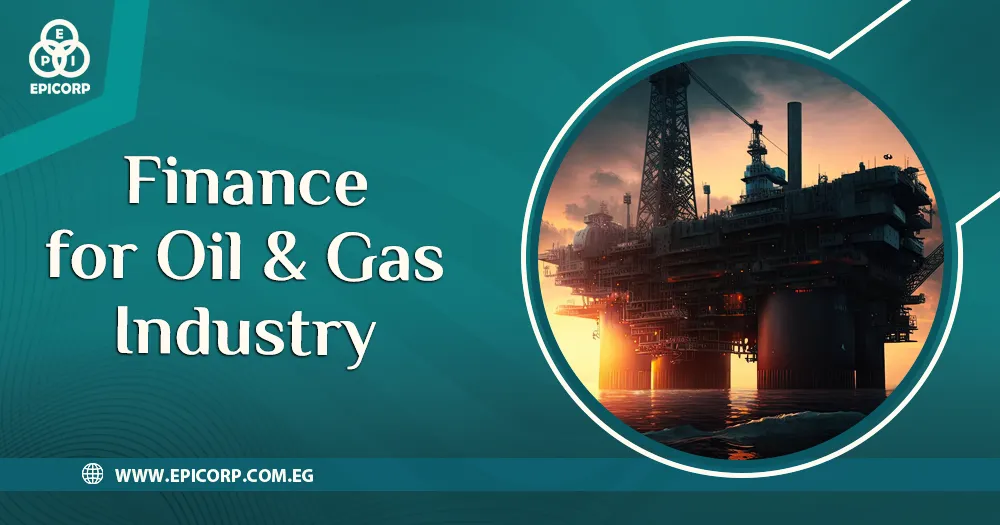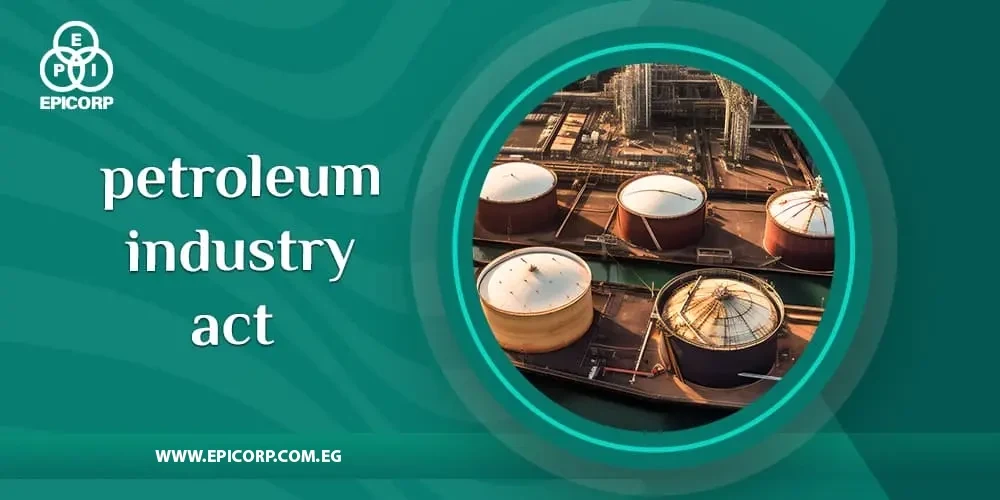finance for oil and gas industry plays a pivotal role in the operations and growth of the oil and gas industry, which remains one of the most significant sectors globally. From exploration and production to refining and distribution, the industry requires substantial capital investment at every stage of the value chain. As a highly capital-intensive sector, the finance for oil and gas industry relies on various financial instruments, strategies.
And markets to fund projects, manage risks, and optimize returns. Understanding the complexities of finance for oil and gas industry is essential for stakeholders, including investors, companies, policymakers, and analysts, as they navigate the dynamic landscape shaped by market volatility, technological advancements, regulatory changes, and environmental considerations.
Table of Contents
ToggleAn overview of the oil and gas industry’s finances
The finance for oil and gas industry represents a complex ecosystem of financial activities that encompass exploration, production, refining, transportation, and distribution. Key financial aspects of the industry include capital expenditure (CAPEX), operational expenses (OPEX), revenue generation, risk management, and investment strategies.
1. Capital Expenditure (CAPEX):
The finance for oil and gas industry requires significant upfront investment in exploration and production activities, including drilling wells, building infrastructure, and acquiring technology.
CAPEX decisions are influenced by factors such as commodity prices, reserve estimates, technological advancements, and regulatory requirements.
2. Operational Expenses (OPEX):
OPEX covers ongoing operational costs, including labor, equipment maintenance, transportation, and regulatory compliance. Managing OPEX efficiently is crucial for maintaining profitability, especially during periods of price volatility.
Read also: Petroleum Industry Definition.
3. Revenue Generation:
Revenue in the finance for oil and gas industry is primarily derived from the sale of crude oil, natural gas, refined products, and petrochemicals. Companies must optimize production levels, pricing strategies, and market access to maximize revenue streams.
4. Risk Management:
The industry faces various risks, including commodity price fluctuations, geopolitical tensions, environmental regulations, and operational hazards. Effective risk management involves hedging strategies, insurance policies, contingency planning, and compliance with industry standards.
Get to know: What Is Petroleum Energy
Who to finance for oil and gas industry
The finance for oil and gas industry employs various financing mechanisms to fund its operations and growth initiatives. These mechanisms include:
1. Equity Financing:
Oil and gas companies can raise capital by issuing shares of stock to investors. Equity financing provides companies with funds without incurring debt obligations, although it dilutes existing shareholders’ ownership stakes.
2. Debt Financing:
Debt financing involves borrowing funds from lenders, such as banks, financial institutions, or bondholders, with the promise of repayment with interest. Oil and gas companies utilize debt financing to finance capital-intensive projects, such as exploration, drilling, and infrastructure development.
3. Project Finance:
Project finance is a specialized form of financing used for large-scale capital projects, such as oil and gas exploration and production ventures. In project finance, funding is secured based on the project’s anticipated cash flows and assets, rather than the creditworthiness of the sponsoring company.
4. Joint Ventures and Partnerships:
Oil and gas companies often form joint ventures or strategic partnerships to share the financial burden and risks associated with exploration, production, and development projects.
Here’s: Solid Waste Management In Petroleum Refineries.
Project finance stages in the oil and gas industry
finance for oil and gas industry typically involves several distinct stages, each essential for successfully financing and executing large-scale exploration, production, or development projects. These stages may vary depending on the specific project’s complexity, size, and location, but generally include:
1. Pre-feasibility and Project Development:
During this initial stage, project sponsors assess the feasibility of the proposed oil and gas project by conducting technical, economic, and environmental studies. This phase involves evaluating the project’s resource potential, estimating costs and revenues, identifying regulatory requirements.
2. Structuring and Financing Plan:
Once the project’s feasibility is established, sponsors begin structuring the project’s financing plan. This involves determining the optimal capital structure, identifying potential sources of funding, and negotiating terms with lenders, investors, and other stakeholders.
3. Negotiation and Documentation:
During this stage, project sponsors negotiate and finalize key agreements and contracts essential for project financing and execution. These agreements may include project finance agreements, loan agreements, off-take agreements, engineering, procurement, and construction (EPC) contracts, supply agreements, and operating agreements.
4. Financial Close:
Financial close marks the completion of negotiations and the finalization of all financing arrangements necessary to proceed with the project. At financial close, project sponsors execute loan agreements, equity subscription agreements, security documents.
Read also: Petroleum Refinery In Modern Times.
Advantages of project finance
Project finance offers several advantages for financing large-scale infrastructure and industrial projects, including those in the finance for oil and gas industry:
- Risk Allocation: One of the primary advantages of project finance is the effective allocation of risks among project stakeholders. By structuring financing arrangements around specific projects, risks such as construction delays, cost overruns, operational performance.
- Limited Recourse Financing: Project finance typically involves limited recourse financing, where lenders’ recourse to project sponsors or shareholders is limited to the project’s assets and cash flows.
- Enhanced Capital Efficiency: Project finance allows project sponsors to optimize capital efficiency by leveraging project-specific assets and cash flows to secure funding. This enables companies to undertake capital-intensive projects without significantly increasing their overall debt levele.
- Off-Balance Sheet Financing: Project finance transactions are often structured to keep project debt off the sponsor’s balance sheet, thereby preserving credit capacity and improving financial flexibility.
Read also: Oil Refinery Waste Products.
Documentation for financing oil and gas projects
Documentation for finance for oil and gas industry is essential for establishing clear guidelines, defining responsibilities, and mitigating risks throughout the project’s lifecycle. Key components of documentation include:
- Project Finance Agreements: These agreements outline the terms and conditions of the financial arrangement between project sponsors, lenders, and investors.
- Off-take Agreements: Off-take agreements govern the sale and purchase of oil and gas produced from the project. They specify the volume, price, delivery terms, and duration of the off-take arrangement, ensuring revenue stability and cash flow predictability for lenders and investors.
- Engineering, Procurement, and Construction (EPC) Contracts: EPC contracts define the scope, schedule, and cost of constructing the project’s infrastructure.
- Supply Agreements: Supply agreements secure the procurement of materials, equipment, and services necessary for project development and operation.
- Operating Agreements: Operating agreements govern the management and operation of the project post-construction.
Here’s: Financial Ratios For Oil And Gas Industry.
Conclusion
In conclusion, EPICORP serves as the lifeblood of the oil and gas industry, underpinning its operations, investments, and strategic decisions. The sector’s unique characteristics, such as high capital requirements, long project timelines, and exposure to market volatility, necessitate sophisticated financial management strategies.
As the finance for oil and gas industry continues to evolve in response to shifting market dynamics, technological innovations, and sustainability imperatives, the role of finance becomes even more critical. Whether it’s funding exploration endeavors, optimizing production efficiencies, or navigating regulatory challenges, finance for oil and gas industry remains integral to the success and resilience of oil and gas companies.
FAQ
What is financial management in the oil and gas industry?
Financial management in the oil and gas industry involves overseeing the financial aspects of exploration, production, refining, and distribution activities. This includes budgeting, cost control, investment analysis, risk management, and financial reporting tailored to the unique challenges and complexities of the industry, such as fluctuating commodity prices, geopolitical risks, and regulatory compliance.
How to finance oil and gas projects?
Financing oil and gas projects involves a mix of debt and equity financing strategies tailored to the unique risks and long-term nature of the industry. Debt financing options include bank loans and project finance, where funding is secured based on the project's potential cash flow rather than the company's creditworthiness. Equity financing can be raised through stock offerings, partnerships, or joint ventures, allowing companies to attract investors and share the risks and rewards of the project.



